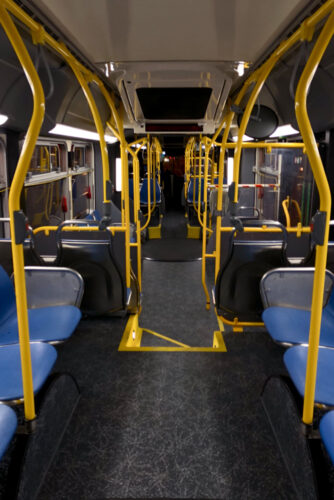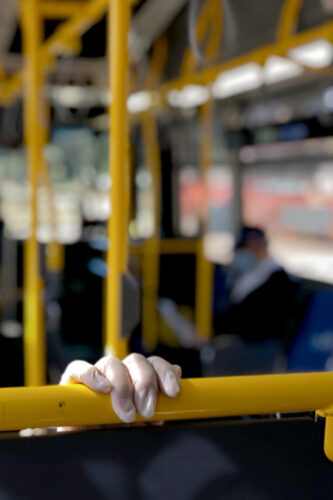What Does the Muni’s Future Look Like on Frida Kahlo?
By Tim Hill
As the COVID-19 pandemic rages through its eighth month and begins to approach its ninth, classes will still remain virtual. This means that the once bustling strip we now call Frida Kahlo Way will continue to be as desolate as ever. Its primary occupant, the 49-Van Ness/Mission bus, is still continuing its tireless vigil from the Marina down to its terminus at Frida Kahlo. As one of the most important and well-used buses in the city, ridership for it is more crucial than ever.

Since the pandemic shutdowns took effect in mid-March of this year, the entire Muni system has been losing money and subsequent ridership at a fierce rate. For many months, ridership was free due to pandemic losses and unemployment, but has since been reinstated. Additionally, other social programs have been added such as reduced fares for low-income residents, an essential trip card to help seniors and people with disabilities to make essential trips via taxi to appointments, grocery shopping, and other basic outings.
As the overall increase in car traffic continues due to people feeling safer in their own vehicles as opposed to riding public transit, Muni is continuing to find safer ways to save itself from economic collapse as well as regain trust in riders to use it as a daily service. Certain occupations have begun to return to in person employment again, which hopefully will begin to see an increase in Muni’s ridership.
In my view, one simple measure that Muni can do to improve safety during the pandemic and increase trust in ridership again is to have hand sanitizer and masks available on buses. This is a commonsense and safe practice that Muni’s East Bay cousin AC Transit has been implementing. While it obviously will not solve the problem of COVID-19, it eliminates the excuse of not having a mask when it comes time to board the bus. Everyone has a mask, and everyone can wash their hands and keep clean until they get to their destination. For unhoused people, this could be of great help in cutting down cases amongst the population most likely to spread it the quickest. I have personally witnessed a driver on the 1-California ignore the pleas of his riders when they asked him to not pick up any new passengers since all seats were taken and social distancing was becoming impossible.
In general, Muni needs to up its game with regard to enforcing social distancing on its buses and capping the number of riders on each bus that is conducive with the size of the bus itself. To that end, many lines, including the 49, have been swapping out their regular 40 ft buses with accordion-style 60 foot buses to accommodate more riders and create easier social distancing. With City College students not riding it to class until further notice, a large bracket of that line’s population is removed.

Muni can get on the road to recovery when a vaccine becomes available and schools and businesses begin to reopen, even if only at half capacity. I also firmly believe that there are many who ride Muni for the scenery of our city and the sense of relaxation it brings them.
